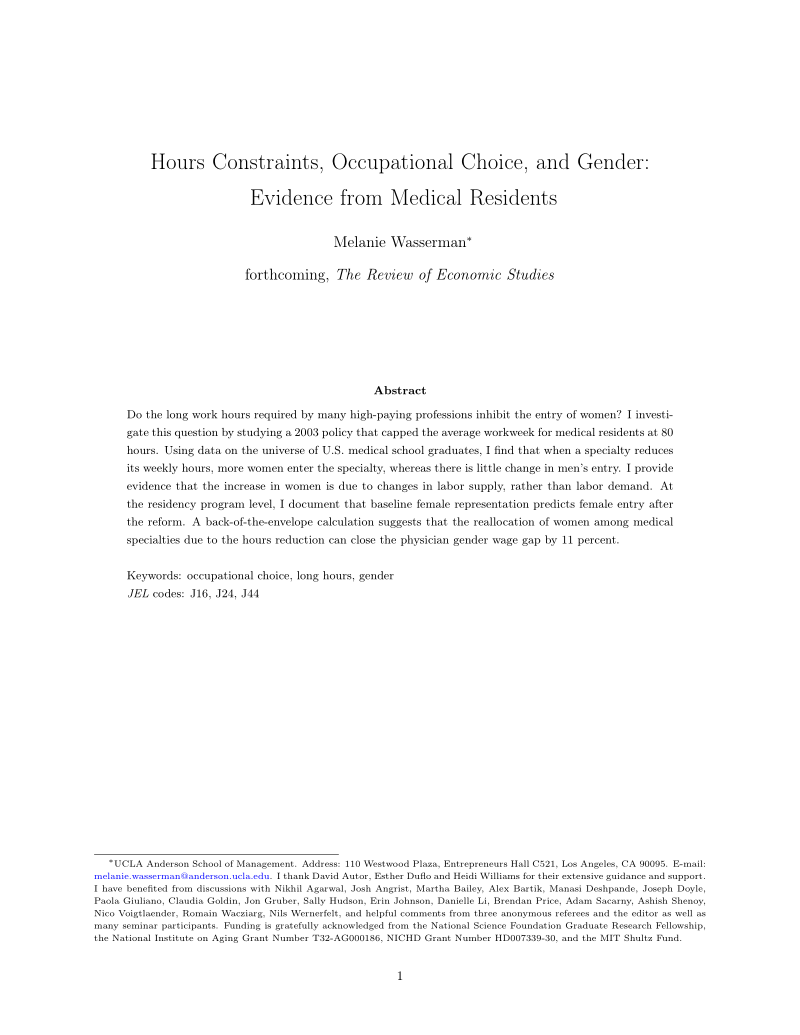The Review of Economic Studies finds that long hours deter women from entering the medical profession.
- Type
- Academic / Technical Report
- Source
- Melanie Wasserman Non-LDS
- Hearsay
- Direct
- Reference
Melanie Wasserman, "Hours Constraints, Occupational Choice, and Gender: Evidence from Medical Residents," The Review of Economic Studies, forthcoming, 21-22
- Scribe/Publisher
- The Review of Economic Studies
- People
- Melanie Wasserman
- Audience
- Reading Public
- Transcription
This paper informs the debate by empirically examining whether one non-monetary attribute of jobs in high-paying professions—long, inflexible time requirements during early career years—differentially deters women from entering. Using plausibly exogenous variation in weekly hours worked during medical residency stemming from the introduction of the 2003 ACGME duty hour reform, I find that reducing a medical specialty’s hours induces more women to enter, but has little effect on men’s entry. Furthermore, the entry of women appears to be due to changes in physician preferences for specialties, rather than a shift in residency program preferences for hiring women. I estimate that the entry of women into historically time-intensive and high-paying specialties due to a four hour per week reduction could close the physician gender pay gap by 11 percent.
Excessively long hours are not unique to the medical profession; early career investment bankers work, on average, 74 hours per week and 18 percent of tenure-track assistant professors at research universities work 70 or more hours per week (Bertrand et al., 2010; NCES, 1999). These long work hours may serve a productive purpose, such as fostering skill acquisition, producing gains from the continuity of work, or addressing the imperfect substitutability of workers. This paper demonstrates, however, that the hours requirements ubiquitous among professional occupations have important implications for occupational segregation by gender. From an equity perspective, reducing hours requirements could be considered an effective tool alongside the many gender diversity initiatives enacted by employers. From an efficiency perspective, as discussed by Hsieh et al. (2019), it is possible that long hours are an occupational friction restricting the optimal allocation of talent in the labor market.
- Citations in Mormonr Qnas
The B. H. Roberts Foundation is not owned by, operated by, or affiliated with the Church of Jesus Christ of Latter-day Saints.

